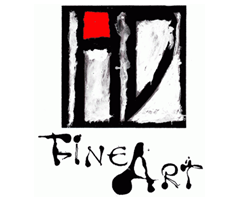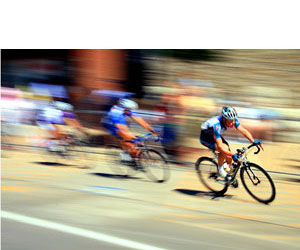Product Description
Jeffrey Hartman “Motobecane” Oil on canvas 1978


JEFFREY HARTMAN USA
“Motobecane” 1978
Oil on canvas
Signed: “Jeffrey Hartman ‘78”, “© 78 HARTMAN” (on the back)
Framed H: 26 1/2” x W: 18 1/2”
Price: $18,000
Belgian art dealer Isy Brachot coined the French word Hyperréalisme, meaning Hyperrealism, as the title of a major exhibition and catalogue at his gallery in Brussels in 1973. The exhibition was dominated by such American Photorealists as Ralph Goings, Chuck Close, Don Eddy, Robert Bechtle and Richard McLean; but it included such influential European artists as Gnoli, Richter, Klapheck and Delcol. Since then, Hyperealisme has been used by European artists and dealers to apply to painters influenced by the Photorealists. However, Hyperrealism is contrasted with the literal approach found in traditional photorealist paintings of the late 20th century. Hyperrealist painters and sculptors use photographic images as a reference source from which to create a more definitive and detailed rendering, one that often, unlike Photorealism, is narrative and emotive in its depictions. Strict Photorealist painters tended to imitate photographic images, omitting or abstracting certain finite detail to maintain a consistent over-all pictorial design. They often omitted human emotion, political value, and narrative elements. Since it evolved from Pop Art, the photorealistic style of painting was uniquely tight, precise, and sharply mechanical with an emphasis on mundane, everyday imagery. Hyperrealism, although photographic in essence, often entails a softer, much more complex focus on the subject depicted, presenting it as a living, tangible object. These objects and scenes in Hyperrealism paintings and sculptures are meticulously detailed to create the illusion of a reality not seen in the original photo. That is not to say they’re surreal, as the illusion is a convincing depiction of (simulated) reality. Textures, surfaces, lighting effects, and shadows appear clearer and more distinct than the reference photo or even the actual subject itself.
Jeffrey Hartman “Motobecane” Oil on canvas 1978
You must be logged in to post a comment.
MICHIEL GLOECKNER (1915-1989) Germany / USA
Old Town No. 2 1960
Oil on Canvas
Signed: MG (lower right corner)
Canvas: H: 14 1/16” x W: 11 1/16”
Framed: H: 19 9/16” x W: 16 9/16”
Price: 32,000
Michiel Gloeckner, known for his highly refined, balanced abstract, geometric style derived from natural forms, was the son of a well-known art collector. He graduated from the University of Dresden with a degree in mathematics and art history. He received a degree from the Royal Academy of Dresden where he studied under Otto Dix. Paul Klee also influenced Gloeckner’s work. After WWII Gloeckner moved to New York City. He continued to maintain a studio in New York at 115 East 70th Street, even after he moved to West Cornwall, Connecticut where he spent the later years of his life.
EXHIBITIONS
Gallery Seventy-Five, New York 1955, 1956, 1958
Jacques Seligman Galleries, New York 1960, 1961, 1962
Wadsworth Atheneum 1960
Wesleyan University 1961
Philadelphia Art Alliance 1962
Philadelphia Academy of Fine Arts 1963
World House Galleries, New York 1963, 1962, 1965, 1966
Columbus Gallery of Fine Arts 1964
Brooks Memorial Museum 1965
Munich Kunstverein 1966
Galerie Heseler, Munich 1967
Munich Museum of Modern Art 1968
Museum of Northern Arizona 1970
Galerie 5, Paris 1972, 1973, 1974, 1975, 1976
Galerie Oxy, Geneva 1973
United Nations, Geneva 1974
Gallery Contemporary Masters, New York 1978, 1980
MUSEUM COLLECTIONS:
Pinakothek der Moderne Munich
Allentown Art Museum
Museum of Modern Art, Stockholm
LOUIS F. BERNEKER (1872-1937) USA
“The Three Graces” c. 1910
Oil on canvas, gilt Arts & Crafts style frame
Signed: Louis F. Berneker (lower left)
For more information see: Who Was Who in American Art
(Madison, Conn.: Sound View Press, 1985) p. 50
Canvas: H: 25 1/8” x W: 30 1/8”
Frame: H: 35 5/8” x W: 40 5/8”
Born in Cincinnati, Ohio, Louis Berneker first began his art training at the St. Louis School of Fine Art. From 1903 to 1904, he studied at the prestigious Académie Julian in Paris under J.P. Laurens. Upon his return to the United States, he lived primarily in New York City and later in Gloucester, Massachusetts, where he died in 1937. An accomplished painter in oils and watercolors, he was a member of the New York Watercolor Club, American Watercolor Society, the National Arts Club, and an associate member of the National Academy of Design. In 1930, the painter won prizes for works exhibited at both the National Academy of Design and Allied Artists of America’s juried shows. Berneker exhibited his work at the Pennsylvania Academy of the Fine Arts from 1910 to 1914 and again in 1921, as well as at the National Academy of Design in 1930 (prize), Art Institute of Chicago, and the Society of Independent Artists. His works are housed in the Church of St. Gregory the Great, New York City; the Belmont Theatre, both in New York City, the Chicago Theatre, and the Dallas Art Academy.

Reviews
There are no reviews yet, would you like to submit yours?